
views
- Ask the dog’s owner for permission to pet their dog.
- Kneel or squat to get on the dog’s level, and then let the dog approach you.
- Give the dog plenty of time to smell you, and if they seem receptive, gently pet the dog under the chin.
Ask for the owner's permission to pet the dog.

If you want to pet someone else’s dog, be sure you’ve got the owner’s OK. Dogs tend to be docile animals, but some can get spooked when approached. If the dog seems unfriendly or scared, steer clear of it to keep both you and the dog safe and happy. If the dog seems friendly, be sure to ask the owner for permission to approach and pet the dog anyway. Say, “What a sweet doggy! Is it OK if I pet them?” but don’t take it personally if the owner says no. Even if the dog seems super friendly, they may be more aggressive than you realize—or the owner could be busy and not have time to stop and chat. Either way, it’s always best to ask for permission to approach!
Maintain a calm attitude.
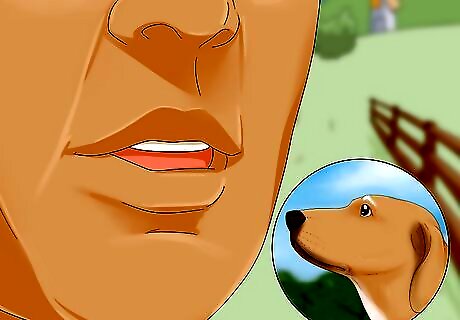
Use a calm, confident tone of voice. Always approach new dogs as slowly and calmly as you can, keeping your voice even and soothing. This is a good rule of thumb for any dog you don’t know: if the dog you’re approaching has had a rough history, they may be primed to perceive threats even where there aren’t any and feel nervous and defensive. Maintaining a slow and easy voice may help keep the dog calm. On that note, try not to be nervous yourself as you approach them: if the dog thinks you are fearful, it may become more tense.
Get down on the dog’s level.
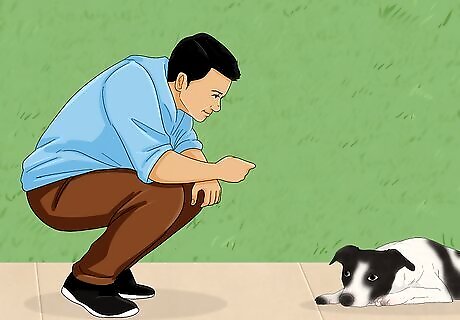
Kneel or squat a few feet from the dog. It’s important to stay calm and confident when approaching a dog for the first time, but standing over them may make you seem dominant and intimidating. Getting down to the dog’s level sends them the message that you’re not a threat. Avoid looking into the dog's eyes or staring at it. This could seem like a threat to any dog.
Note if the dog's body language is friendly.
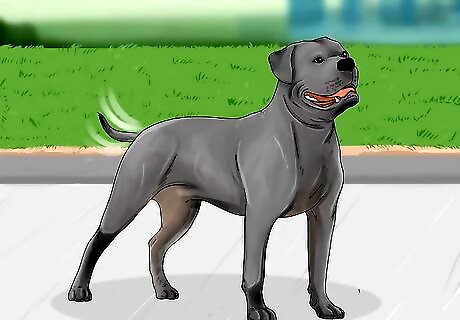
Look for friendly body language, like an open mouth or wagging tail. If the dog is open to meeting a new person, it'll show it with a relaxed face and ears, a wagging tail, a loose stance, and an open, "happy" mouth. Alternatively, if the dog's ears are pinned back against its head or if its tail is tucked between its legs, you can assumethe dog is anxious or scared, and not up for interacting. If the owner has any treats for you to offer the dog, this may help the dog feel more relaxed and trusting. Avoid letting the dog eat from your hand when you don't know them: instead, gently set a treat or 2 on the ground near the dog.
Let the dog come to you.
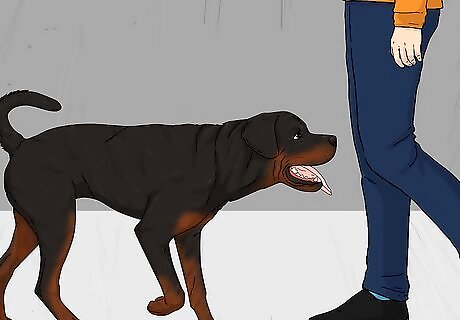
Pause a few feet away from the dog, and let them approach you. If you remain calm and move slowly, the dog will feel more at ease and may close the gap between you. Alternatively, if the dog feels as if you’re too aggressive, or if you pet them when they’re not ready to be touched, they may feel threatened and behave erratically or even dangerously. If the dog doesn’t come to you, or if they begin to seem anxious or aggressive, slowly back away.
Allow the dog to sniff you.
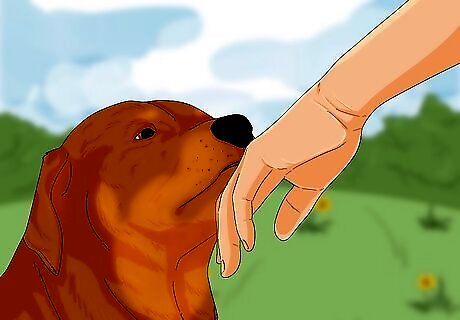
Slowly extend your hand to the dog and let them smell it. Hold your fingers together and present the back of your hand to the dog for it to sniff. Dogs rely on their sense of smell to decipher whether a threat is present or not. By sniffing you, they can determine if you’re friendly and maybe even if you have a dog (or other pet) yourself. Give the dog as much time as it needs to smell you. If they’ve met you before, your smell will remind them who you are—and if you’re meeting for the first time, it’ll help them remember you in the future.
Interact with the dog if it accepts you.
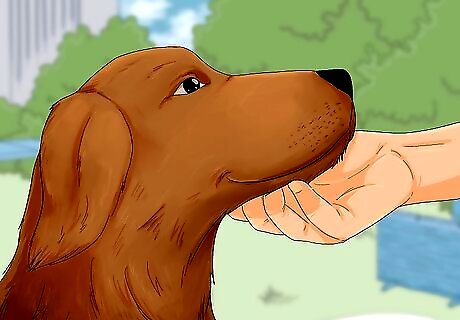
If the dog seems receptive, gently pet it under the chin. After the dog has sniffed your hand and has accepted you, then slowly pet it under the chin, being sure the dog sees your hand moving so your touch doesn’t startle them. While you may pet your own dog on the back or head, avoid petting a new dog on its head or back as this may come across as intimidating, especially if the dog has a history of abuse. If the chin scratching seems to be going well, try scratching the dog’s ears. If the dog begins to display anxious body language, growl, or pull away, remove your hand and take a few steps back.
Keep the meeting short.

Avoid petting the dog for more than a few minutes the first time you meet. Dogs don't tend to like long meetings with strangers, so even if your first interaction is going great, cut it short after a minute or 2. The next time you meet, you may pet the dog for longer. If the dog gets excited and jumps up on you, take a few steps back. The owner may still be in the process of teaching their dog not to jump on strangers, so try not to encourage the dog's behavior, even if you don't mind it.


















Comments
0 comment